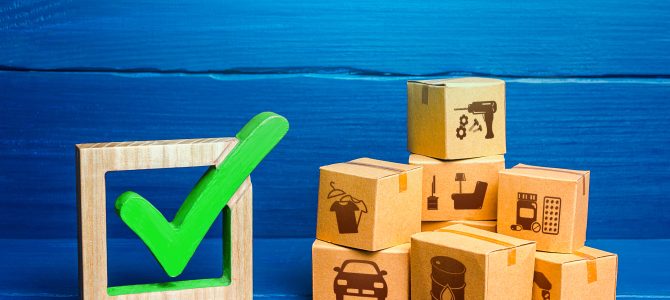
EkotoxInfo 11/2022
We encourage you to read the current issue of EkotoxInfo chemical news. In the summary of last month you will find the following topics:
- One in four substances recovered from waste non-compliant with REACH
- Restriction proposals for bisphenols and creosote available
- Assessment of regulatory needs reports published
- Restriction process on certain cobalt compounds terminated
- Consultation on new CLP classes finalised
- Skin sensitizing substances in consumer mixtures
- Control program of imported substances and products in 2023-2025
- SCIP database available in EEA countries
- Revision of REACH regulation to be postponed
- Cosmetics – changes in the cosmetics ingredients
- The European Commission has published guidelines for safe chemicals
- Community rolling action plan for 2021-2023
- A new list of allergens in cosmetics in 2023
- Guidance on the Biocidal Products efficacy has been updated
- Reminder to update the safety data sheets
-
One in four substances recovered from waste non-compliant with REACH
ECHA checked whether substances obtained from waste meet the conditions for exempting substance registration under REACH. The obtained results showed that 26% of the substances did not meet the conditions in the scope of:
- the identity of the recovered substance with the original one, registered in REACH;
- the availability of information on safe use.
Ekotox news: https://ekotox.eu/news/one-in-four-substances-recovered-from-waste-non-compliant-with-reach/
-
Restriction proposals for bisphenols and creosote available
Restriction proposals published for:
- 4,4′-isopropylidenediphenol (bisphenol A) as well as other bisphenols and bisphenol derivatives with endocrine-disrupting properties for the environment, prepared by Germany;
and
- creosote and related substances prepared by France..
Ekotox REACH webpages: https://ekotox.eu/reach-regulation/
-
Assessment of regulatory needs reports published
A report for the paraben acid, salts and esters group of substances is now available.
-
Restriction process on certain cobalt compounds
The proposed restriction of some cobalt compounds has temporarily not been adopted. According to the April decision, the committee should not prepare amendments to Annex XVII of REACH. However, the Commission asked the RAC for an opinion on the occupational exposure limits to cobalt compounds, due by the end of this year.
https://ec.europa.eu/docsroom/documents/49954?locale=en
-
Consultation on new CLP classes finalised
Open public consultations on the draft law introducing new hazard classes as part of the revision of the CLP regulation lasted until October 18, in which the committee proposed the need to introduce 3 new hazard classes. The Commission will now assess the comments on the project and start the procedure for adopting the changes.
-
Skin sensitizing substances in consumer mixtures
Denmark, France, Germany and Ireland were requesting interested parties to submit information related to skin sensitising substances in consumer mixtures. The information gathered will be used to assess the need for regulatory actions on skin sensitisers in consumer mixtures.
This call for evidence consultation has been extended until 31 October 2022.
Current calls for comments:
-
Control program of imported substances and products in 2023-2025
The inspections are planned for 2023-2025 and involve the national authorities of the Member States. The project will also work on further developing and strengthening the existing cooperation between REACH inspectors and customs authorities.
https://ekotox.eu/news/control-program-of-imported-substances-and-products-in-2023-2025/
-
SCIP database available in EEA countries
From 7 November, companies from Iceland, Liechtenstein and Norway can submit notifications on their products containing substances of very high concern to ECHA. We remind you, that for EU countries, the duty to submit SCIP notifications started in January 2021.
https://echa.europa.eu/pl/-/eea-countries-can-soon-notify-to-scip-database
-
Revision of REACH regulation to be postponed
On October 18, 2022, the European Commission adopted the Commission’s Work Program for 2023, postponing the revision of the REACH Regulation to the end of 2023.
https://ekotox.eu/news/revision-of-reach-regulation-to-be-postponed/
-
Cosmetics – changes in the cosmetics ingredients
On November 10, the European Commission published a new regulation amending the annexes to the Cosmetics Regulation. This regulation shall enter into force on the twentieth day following its publication – 01.12.2022.
https://ekotox.eu/news/cosmetics-ingredients-changes/
-
The European Commission has published guidelines for safe chemicals
The Strategic Research and Innovation Plan for Chemicals (SRIP) sets out a roadmap to the European Green Deal and highlights the key areas of research and innovation responsible for creating safe and sustainable chemicals and materials.
Guidance for safe and sustainable chemicals and materials published (europa.eu)
-
Community rolling action plan for 2021-2023
The Community rolling action plan identifies priority substances for evaluation to address concerns about possible risks to human health or the environment from the manufacture or use of these substances. The assessment may lead to the inclusion of a substance e.g. on the CMR, ED, PBT list and regulate their further use.
-
A new list of allergens in cosmetics in 2023
The amendment to the Cosmetics Regulation extends the list of allergenic substances. The project is already prepared and its publication is planned at the turn of the first / second quarter of 2023.
https://members.wto.org/crnattachments/2022/TBT/EEC/22_6171_00_e.pdf
-
Guidance on the Biocidal Products efficacy has been updated
The guidance document for the Biocidal Products Regulation (BPR) Volume II – Efficacy Assessment and Evaluation (Parts B+C) has been updated. The update covers the chapter on disinfectants for product-types 1-5. Appendices 1-4 have also been updated based on recently developed and published European standards.
ae2e9a18-82ee-2340-9354-d82913543fb9 (europa.eu)
-
Reminder to update the safety data sheets
Once again, we would like to remind you about the upcoming update date of the current safety data sheets. From January 1, 2023, all safet data sheets must comply with the new format.
https://ekotox.eu/news/safety-data-sheets-2022-dont-miss-the-deadline/
EKOTOX CENTERS consultancy support https://ekotox.eu/
Online consultations, training and webinars: https://ekotoxtraining.com/






